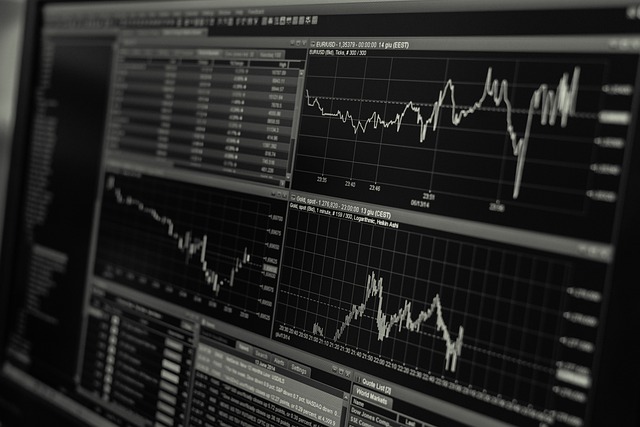How to Check Trading Volume on Bybit: Complete Step-by-Step Guide
Author: Jameson Richman Expert
Published On: 2025-11-07
Prepared by Jameson Richman and our team of experts with over a decade of experience in cryptocurrency and digital asset analysis. Learn more about us.
How to check trading volume on Bybit is a common question for traders who want to confirm trends, gauge liquidity, or verify market activity before entering trades. This guide walks you through every way to view and interpret volume on Bybit — from the market list and TradingView charts to order book depth, the Bybit API, and third‑party aggregators — and gives practical examples, actionable steps, and best practices to use volume correctly in your trading decisions.

Why trading volume matters (and what it actually measures)
Trading volume is the total quantity of an asset traded over a defined period (e.g., per minute, hourly, 24 hours). It’s a primary confirmation tool in technical analysis: price moves with high volume are considered stronger and more reliable than the same moves on low volume. Volume also indicates liquidity — higher volume generally means tighter spreads and less slippage for market orders.
For an authoritative overview of the concept, see the Wikipedia page on trading volume.
Where Bybit displays trading volume (overview)
- Market list (24H Volume) — overview of exchanges/pairs
- Trading pair header — current pair stats on Bybit UI (24H volume, price change)
- Charts (TradingView integrated) — add the Volume indicator and other volume-based indicators (OBV, VWAP)
- Order book and market depth — real-time liquidity at price levels
- Recent trades / Trade tape — tick-by-tick executed trades
- Bybit API — programmatic access to historical and real-time volume data
- Third-party aggregators (CoinMarketCap, CoinGecko, CryptoCompare) — cross-check exchange-reported volumes
Step-by-step: Check trading volume on Bybit Web (desktop)
Follow these steps for the Bybit website (web browser). Screens and labels can shift slightly depending on Bybit UI updates but the core flow remains the same.
- Open Bybit and sign in. Use Bybit’s main site or invite link: Bybit invite/register.
- Go to Markets or Trade. Click "Markets" to see the market list or "Trade" to go directly to the trading interface.
- Find your trading pair. Use the search box (e.g., BTC/USDT, ETH/USDT) and note the 24H Volume column in the market list. This gives a quick snapshot of reported exchange volume in the last 24 hours.
- Open the trading pair page. In the pair header you’ll see live metrics such as 24H Volume, 24H High/Low, and price change %.
- Open the chart panel and add volume indicator.
- Bybit uses TradingView charts. Click the chart area > Indicators > search "Volume" and add it. You’ll see vertical bars under the price chart showing buy/sell volume per candle.
- For added insight, add On-Balance Volume (OBV) or Volume Profile to analyze where trading is concentrated.
- Check Order Book and Recent Trades. The order book shows aggregated limit orders (depth). Compare book size at near price levels to assess immediate liquidity. The “Recent Trades” list shows executed trades with size and price — helpful for seeing real-time volume flow.
Quick example
If BTC/USDT price breaks a resistance candle with a spike in the Volume indicator (significantly above the average volume of the last 20 candles), this suggests genuine buying interest and a higher probability of follow-through. Conversely, a breakout on low volume often signals a false breakout.

Step-by-step: Check trading volume on Bybit Mobile App
- Open the Bybit app and log in.
- Tap Markets or Trade. Search for your pair.
- View 24H Volume in Markets. The market list shows a 24H volume column for each pair.
- Open the chart and add the Volume indicator. Tap the chart → Indicators → type "Volume" and add. Adjust indicator settings if you want (e.g., moving average overlay).
- Tap Order Book / Recent Trades. View order book depth and recent trades to see short-term execution volume.
Differences: Spot pairs vs. Perpetual / Futures volume
On Bybit you’ll trade spot and derivatives (perpetual futures). Note:
- Spot volume: actual buy/sell of the asset (deliverable).
- Perpetual futures volume: contract trading volume; can be larger and influenced by leveraged traders.
- Open interest: not volume, but important for futures — it shows total outstanding contracts. Use open interest together with volume to judge trend strength in derivatives markets.
To read more about how crypto trading generally works and the differences between instruments, see this beginner’s overview: How does cryptocurrency trading work — complete beginner’s guide.
Using Bybit’s API to check trading volume (for developers)
If you want programmatic access to volume and price data, Bybit has public REST and WebSocket APIs. Key endpoints:
- Public Ticker endpoints (return price and 24h volume)
- Trade records (recent trades)
- Order book (depth)
- Kline/Candlestick endpoints (useful for building volume bars per timeframe)
Sample curl command (illustrative — check Bybit API docs for latest endpoints and parameters):
curl -X GET "https://api.bybit.com/public/linear/recent-trading-records?symbol=BTCUSDT&limit=200"Or request klines and sum "volume" across candles to compute volume for your chosen timeframe. Always use official Bybit API documentation for exact URLs and authentication details.

Cross-check exchange volume with third-party aggregators
Because some exchanges have historically reported inflated or suspicious volume, it’s good practice to cross-check Bybit’s reported 24h volume on reputable aggregators:
- CoinMarketCap — CoinMarketCap
- CoinGecko — CoinGecko
- CryptoCompare and Messari for deeper metrics and adjusted volume
For additional reading about buying Bitcoin on Bybit and platform features, this guide is helpful: Can you buy Bitcoin on Bybit? — In-depth guide.
Volume indicators and how to use them effectively
Adding a simple Volume indicator is a good start, but combining volume with other indicators provides better signals:
- Simple Volume Bars: Shows buy/sell activity per candle. Look for volume spikes with price confirmation.
- On-Balance Volume (OBV): Cumulative line that helps identify whether volume is flowing into or out of an asset.
- Volume Weighted Average Price (VWAP): Useful for intraday trading; it gives the average price weighted by volume and is used for institutional entry/exit benchmarks.
- Volume Profile / Visible Range: Shows traded volume distribution across price levels, highlighting high-volume nodes (support/resistance).
How to interpret volume signals
- Breakouts: Breakouts on high volume are more reliable; low-volume breakouts often fail.
- Divergences: Price making new highs with decreasing volume can signal weakening momentum; similarly for new lows.
- Volume spikes: Often mark capitulation points, institutional entries, or news-driven reactions.
- Confirm trend: In an uptrend, volume should increase on upswings and decrease on pullbacks; the opposite for downtrends.
Order book, market depth, and recent trades — reading micro‑volume
The order book shows current limit orders (bids and asks). Key tactics:
- Depth at key levels: Large limit orders at certain prices act as short-term support/resistance.
- Market taker activity: Rapid execution in the recent trades list shows where the market is being taken by aggressive traders.
- Spoofing and manipulative behavior: Be aware that large orders can be placed and canceled quickly (spoofing). Watch for executed trades rather than just order book size.

Practical trading examples using volume on Bybit
Example 1 — Confirming a breakout (spot)
- Identify horizontal resistance on the chart.
- Watch for a candle closing above resistance with Volume > 1.5× average of previous 20 candles.
- Confirm by checking recent trades for large buy prints and order book thinning on the ask side.
- Enter a long, set stop just below breakout candle, and consider scaling out on decreasing volume.
Example 2 — Futures reversal using volume and open interest
- In a strong uptrend, price spikes to new highs but volume decreases and open interest drops.
- Decreasing open interest with price rising suggests profit taking and potential trend exhaustion.
- Consider partial profit or tightening stops; a subsequent volume spike on a down candle could be a reversal signal.
How to check if reported volume is reliable
Not all reported volume is equal. To evaluate reliability:
- Cross-check with CoinMarketCap/CoinGecko volume totals.
- Compare order book depth to reported volume — shallow book but huge reported volume may be a red flag.
- Use exchange transparency reports and liquidity metrics (where available).
- Look at time-of-day patterns — volume should follow global trading cycles (Asia, Europe, US sessions)
Volume anomalies: common causes and how to handle them
- News and announcements: Sudden spikes often follow major news (listings, partnerships, macro events).
- Market makers: Algorithmic trades can increase volume without directional conviction.
- Wash trading: Some exchanges or participants may artificially inflate volume. Always cross-check.

Use cases: risk management and order sizing with volume
Volume helps size positions and manage risk:
- Enter larger positions when volume confirms a move to reduce slippage risk.
- Avoid market orders in low-volume pairs — use limit orders or smaller sizes.
- Use VWAP as an intraday reference for position entry to get filled closer to institutional average price.
Advanced: volume profile and tools for institutional-style analysis
Volume Profile (Visible Range) shows where volume concentrates at price levels and is commonly used to find value areas and POCs (points of control). On TradingView (and thus on Bybit’s integrated chart), add "Volume Profile" or "Visible Range" to identify high-volume nodes that often act as strong support/resistance.
If you’re interested in blockchain-level metrics or network throughput as a complementary lens, see explanations like this Ethereum block time analysis: Ethereum average block time chart — trends and insights.
Third-party tools and alternative data sources
Use these when you need more than what the Bybit interface provides:
- TradingView — advanced indicators and community scripts
- CoinMarketCap / CoinGecko — exchange and pair volume aggregation
- Glassnode / Messari — on-chain and exchange-adjusted metrics
- Crypto-specific signals or articles — for platform comparisons and reviews see resources like Which app is better for trade — choosing the right trading app

Common beginner mistakes when using volume
- Relying on volume alone — always combine with price action, structure, and other indicators.
- Misreading tick volume vs. true volume — in some charting platforms "tick volume" (number of trades) is used instead of traded quantity.
- Interpreting 24H exchange volume as global market volume — check aggregate sites for a broader view.
Safety, verification and learning resources
Always verify platform claims and learn safe practices. For example, if you’re assessing whether an app or platform is legitimate, consult detailed reviews such as the Binomo review and verification post: Binomo trading app — real or fake?
If you want to expand understanding of volume in the broader context of market structure and trading, consider foundational guides like the one linked above about how crypto trading works: How does cryptocurrency trading work?
Checklist: Quick reference for checking trading volume on Bybit
- Look at 24H Volume in the Markets list for quick snapshot.
- Open pair page and add the Volume indicator on the TradingView chart.
- Check recent trades for large prints and order book for depth.
- Compare spot vs futures volume and monitor open interest for derivatives.
- Cross-check exchange volume with CoinMarketCap/CoinGecko.
- Consider API data for programmatic validation and historical analysis.

Where to open accounts and compare platforms
If you’re comparing exchanges or want to open accounts to practice volume-based strategies, here are links to popular platforms:
- Binance (register): Binance registration
- MEXC (register): MEXC registration
- Bitget (register): Bitget registration
- Bybit (register/invite): Bybit invite link
For a practical comparison of trading apps and choosing the right platform for your needs, see this guide: Which app is better for trade — practical guide.
Final tips and best practices
- Always combine volume analysis with price action and risk management.
- Prefer executed trade data and recent trades over raw order book size to avoid being misled by canceled orders.
- Use multiple timeframes — volume behavior on the timeframe you trade is what matters most.
- For large or institutional-style trades, use VWAP and monitor volume profile nodes for entries and exits.
- Keep learning — track your trades and note how volume patterns affected outcomes.
Further reading
- Can you buy Bitcoin on Bybit? — In-depth guide
- Ethereum average block time chart — trends & insights
- Binomo trading app — review & verification
- Which app is better for trade — choosing the right trading app
- How does cryptocurrency trading work? — complete beginner’s guide
Checking trading volume on Bybit is straightforward once you know where to look: market lists for quick snapshots, charts for candle‑level volume, order book/recent trades for micro‑liquidity, and APIs or third‑party aggregators for programmatic or cross‑exchange validation. Use volume as one of several confirmation tools, and always combine it with strong risk management and a clear trading plan.